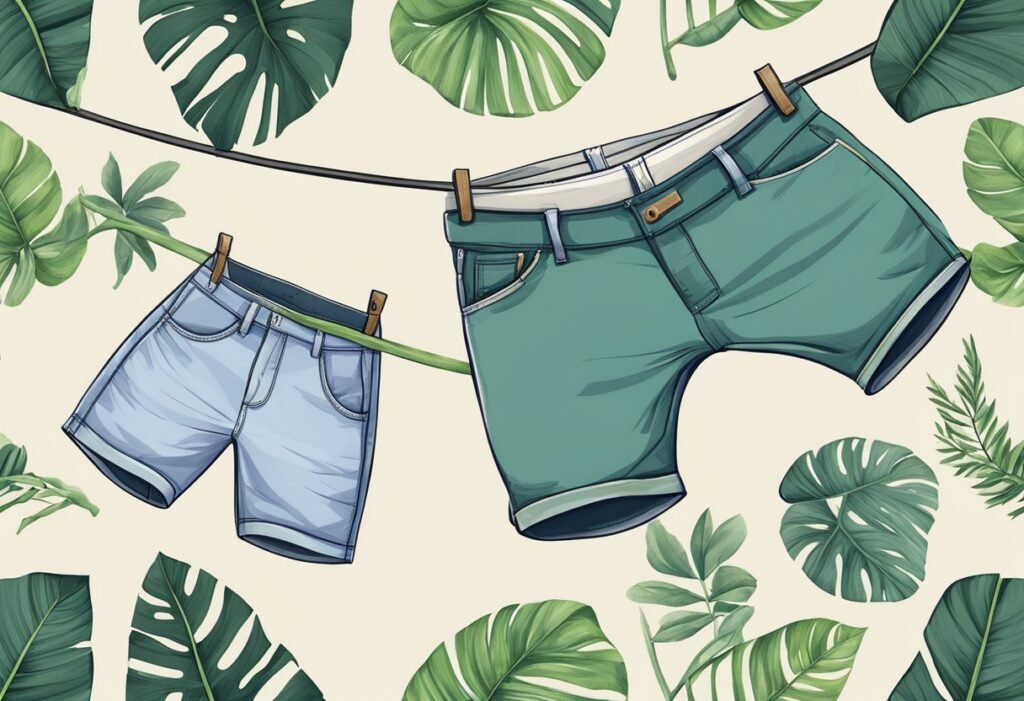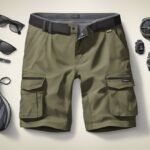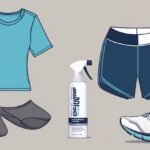Maximizing Breathability in Outdoor Shorts for Humid Environments
When it comes to spending time outdoors in humid environments, wearing the right clothing is essential for staying comfortable and avoiding heat-related illnesses. One key factor to consider is breathability, especially when it comes to outdoor shorts. Breathable shorts can help keep you cool and dry by allowing air to circulate and moisture to evaporate.
So, how can you ensure breathability in outdoor shorts for humid environments? First, look for shorts made from breathable materials such as cotton, linen, or moisture-wicking synthetic fabrics. These materials are designed to allow air to flow through and moisture to evaporate, keeping you cool and dry.
Secondly, consider the design of the shorts. Look for styles with vents or mesh panels that allow air to circulate around your body. Additionally, choose shorts with a loose fit, as tight clothing can trap heat and moisture against your skin. By following these tips, you can ensure that your outdoor shorts are breathable and comfortable, even in the most humid environments.
Materials and Fabrics
When it comes to ensuring breathability in outdoor shorts for humid environments, the choice of materials and fabrics is crucial. The right fabric can make all the difference in keeping you cool and comfortable while you’re out in the heat.
Natural vs Synthetic Fabrics
Natural fabrics such as cotton, linen, and bamboo are great choices for outdoor shorts in humid environments. These fabrics are lightweight, breathable, and absorb moisture well, allowing your skin to breathe and keeping you cool. However, natural fabrics can be prone to wrinkling and may not be as durable as synthetic fabrics.
On the other hand, synthetic fabrics such as polyester, nylon, and spandex are also good options for outdoor shorts in humid environments. These fabrics are lightweight, durable, and quick-drying, making them ideal for activities that involve water or sweat. They are also less prone to wrinkling than natural fabrics. However, synthetic fabrics may not be as breathable as natural fabrics and can sometimes trap heat and moisture against your skin.
Fabric Weave and Construction
The weave and construction of the fabric can also affect breathability. Loose weaves and open-knit constructions allow air to circulate more freely, while tight weaves and dense constructions can restrict airflow and trap heat.
For maximum breathability, consider fabrics with a mesh or perforated construction, which allows air to circulate freely and wick away moisture. Fabrics with moisture-wicking properties, such as those made with Coolmax or Dri-FIT technology, can also help keep you cool and dry in humid environments.
In conclusion, choosing the right materials and fabrics is essential for ensuring breathability in outdoor shorts for humid environments. Whether you opt for natural or synthetic fabrics, be sure to consider the weave and construction of the fabric to maximize airflow and moisture-wicking properties.
Design Features
When it comes to ensuring breathability in outdoor shorts for humid environments, the design features play a crucial role. Here are some design features to consider when choosing breathable outdoor shorts:
Ventilation Zones
Ventilation zones are areas of the shorts that have breathable fabric or mesh to allow air to flow through. These zones are strategically placed in areas that tend to get hot and sweaty, such as the crotch, inner thighs, and back of the knees. Some shorts have ventilation zones that can be opened or closed using zippers or Velcro, allowing the wearer to adjust the airflow as needed.
Loose vs Fitted Styles
Loose-fitting shorts provide more airflow and allow for better ventilation than tight-fitting shorts. However, tight-fitting shorts can also be breathable if they are made from moisture-wicking fabric that pulls sweat away from the skin and allows it to evaporate quickly. Ultimately, it comes down to personal preference and the intended use of the shorts.
In addition to ventilation zones and loose vs fitted styles, other design features to consider include moisture-wicking fabric, lightweight materials, and UPF protection. By taking these design features into account, one can ensure breathability in outdoor shorts for humid environments, allowing for a more comfortable and enjoyable outdoor experience.
Moisture Management
When it comes to ensuring breathability in outdoor shorts for humid environments, moisture management is key. This involves the ability of the fabric to wick away sweat and moisture from the skin, and to dry quickly to prevent discomfort and chafing.
Wicking Technologies
One way to achieve effective moisture management is through the use of wicking technologies. These technologies are designed to pull moisture away from the skin and move it to the surface of the fabric where it can evaporate. Some common wicking technologies include:
- Polyester: Polyester is a synthetic fabric that is known for its ability to wick away moisture. It is often used in outdoor clothing because of its durability and quick-drying properties.
- Merino Wool: Merino wool is a natural fiber that is known for its moisture-wicking properties. It is often used in outdoor clothing because of its softness and ability to regulate body temperature.
- Nylon: Nylon is a synthetic fabric that is lightweight and quick-drying. It is often used in outdoor clothing because of its durability and ability to wick away moisture.
Quick-Dry Treatments
Another way to ensure breathability in outdoor shorts for humid environments is through the use of quick-dry treatments. These treatments are applied to the fabric to help it dry more quickly, reducing the amount of time that moisture is in contact with the skin. Some common quick-dry treatments include:
- DWR (Durable Water Repellent): DWR is a chemical treatment that is applied to the fabric to make it water-resistant. This treatment helps the fabric to dry more quickly by preventing it from absorbing moisture.
- UPF (Ultraviolet Protection Factor): UPF is a rating system that measures the amount of UV radiation that is blocked by the fabric. Fabrics with a high UPF rating are often quick-drying and moisture-wicking, making them ideal for outdoor activities in humid environments.
By incorporating wicking technologies and quick-dry treatments into the design of outdoor shorts, manufacturers can ensure that their products are breathable and comfortable in even the most humid environments.
Care and Maintenance
To ensure maximum breathability in outdoor shorts for humid environments, proper care and maintenance are essential. Here are some tips to help you keep your shorts in top condition.
Washing and Drying
When washing your outdoor shorts, it is important to use a gentle detergent and avoid fabric softeners, as they can clog the breathable fabric. It is also recommended to wash your shorts in cold water to prevent shrinkage and damage to the fabric.
After washing, hang your shorts to dry in a well-ventilated area. Avoid using a dryer, as the high heat can damage the breathable fabric and reduce its effectiveness.
Storage
When not in use, it is important to store your outdoor shorts in a cool, dry place. Avoid storing them in direct sunlight, as this can cause the fabric to fade and deteriorate over time.
To help maintain the breathability of your shorts, it is recommended to store them loosely folded or hanging, rather than tightly packed in a drawer or closet.
By following these care and maintenance tips, you can ensure that your outdoor shorts remain breathable and comfortable, even in the most humid environments.
Choosing the Right Shorts
When it comes to choosing the right outdoor shorts for humid environments, there are a few factors to consider. In this section, we will discuss two important factors that can help ensure breathability in outdoor shorts: brand and quality, and fit and comfort.
Brand and Quality
Choosing a reputable brand and high-quality material can make a big difference in the breathability of outdoor shorts. Look for brands that specialize in outdoor clothing and have a reputation for producing high-quality products. Materials such as polyester, nylon, and spandex are often used in outdoor clothing and can provide good breathability.
Some brands also offer specific technologies that can enhance breathability. For example, some shorts may have mesh panels or ventilation systems to increase airflow. Others may have moisture-wicking properties to help keep the wearer dry and comfortable.
Fit and Comfort
In addition to brand and quality, fit and comfort are also important factors to consider. Look for shorts that fit well and allow for freedom of movement. Tight or restrictive shorts can trap heat and moisture, leading to discomfort and decreased breathability.
Consider the length of the shorts as well. Longer shorts may provide more coverage and protection from the sun, but they may also be hotter and less breathable. On the other hand, shorter shorts may be cooler and more breathable, but may not provide as much coverage.
Lastly, consider the waistband and any additional features such as pockets or drawstrings. A comfortable waistband can make a big difference in overall comfort and breathability. Pockets and drawstrings can also be useful, but be mindful of how they may affect the fit and breathability of the shorts.
By considering brand and quality, fit and comfort, and other factors such as material and length, you can choose the right outdoor shorts for humid environments that provide good breathability and comfort.


